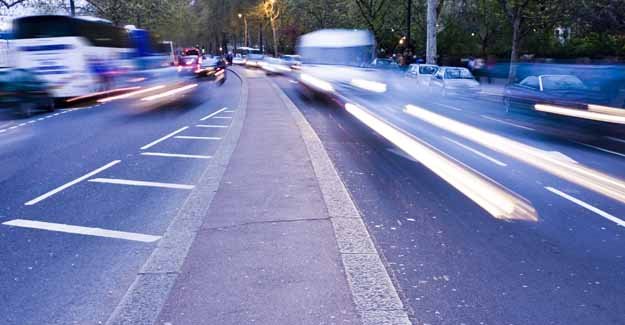Seven million more drivers to add to city congestion
Within twenty years there could be another seven million drivers in the UK.
This means that if current trends persist, the total will leap from about 36 million to 43 million.
The sharp rise is predominantly due to a growing and ageing population, and threatens to bring increased congestion and travel delays.
The effects could be especially in urban areas.
The forecast by the RAC Foundation helps explain why official figures suggest that traffic is set to rise by about a fifth in towns and cities in England and Wales over the next ten years; and by a third over the next 20 years (compared with 2010, Table 1).
Table 1:
Increase in traffic (billions of vehicle miles) on urban roads by region (compared to 2010):
|
Region |
2010 (Urban traffic in billion vehicle miles) |
2025 (% change on 2010) |
2035 (% change on 2010) |
|
North East |
7.8 |
18% |
31% |
|
Yorks & Humber |
18.1 |
25% |
40% |
|
East Midlands |
9.2 |
23% |
35% |
|
East of England |
11.5 |
25% |
39% |
|
South East |
19.2 |
22% |
36% |
|
London |
19.4 |
22% |
35% |
|
South West |
8.7 |
23% |
36% |
|
West Midlands |
16.8 |
20% |
33% |
|
North West |
22.7 |
19% |
32% |
|
England |
133.4 |
22% |
35% |
|
Wales |
4.6 |
19% |
32% |
Source: https://www.gov.uk/government/publications/road-transport-forecasts-2013
The traffic and driver figures are at the heart of the debate over the way we will travel in the future. As part of its contribution to the subject the RAC Foundation invited twelve experts and organisations, with a wide range of perspectives, to give their views on urban transportation in the decades ahead.
These essays are published in Moving Cities: The future of urban travel. Each essay presents the author’s independent view.
The essays raise many points including that:
- 49% of people in England and Wales live in towns and cities with a population of at least 250,000
- Three-quarters of households in towns have at least one car
- Two-thirds of households in cities have at least one car
- In-vehicle technology and smart traffic management systems are already playing a major role in fighting congestion, reducing carbon emissions and keeping people safe
- Electric cars will bring significant environmental benefits but the cheap price of fuel relative to petrol and diesel could increase traffic
- The pricing of transport is one of the most significant policy levers ministers have to create behaviour change
- Change is almost certain to be incremental
- Government will retain a crucial role in setting funding and regulatory frameworks
Professor Stephen Glaister, director of the RAC Foundation, said:
“The infrastructure minister Danny Alexander has repeatedly talked up the government’s plans to invest significantly in the road network and today we should learn where a good part of the £15 billion he has promised will be spent on the routes linking our towns and cities.
“This is very welcome, but our work illustrates the massive challenges we also face in unclogging our urban areas. Traffic forecasting is not an exact science but the direction of travel is clear: towards increasing jams.
“We all want to see more drivers using alternative methods of getting about but the government’s own figures suggest we face an uphill battle under present policies. To preserve the quality of life in towns and cities we must revise our travel expectations and ministers need to set clear and coherent strategies to facilitate this.
“The UK’s automotive industry is leading the world in innovation to protect road users and the environment but technical innovation is not a panacea. It’s perhaps no surprise that jetpacks never caught on, but it is disappointing how levels of home and tele-working have risen so little over the past decade despite the telecoms revolution.
“We should also be cautious about what driverless cars can deliver. They could dramatically cut death on the roads and give mobility to people usually excluded from personal transport: the young, the very old, those with frailties. But this new-found freedom could actually make our roads busier not quieter.”
ENDS
Contact:
Philip Gomm – Head of External Communications – RAC Foundation
[email protected] | 020 7747 3445 | 07711 776448 | 020 7389 0601 (ISDN)
Notes to editors:
The RAC Foundation is a transport policy and research organisation that explores the economic, mobility, safety and environmental issues relating to roads and their users. The Foundation publishes independent and authoritative research with which it promotes informed debate and advocates policy in the interest of the responsible motorist.
The RAC Foundation is a registered charity, number 1002705.
The paper is available to download under embargo:
This is a link to an interactive chart showing how population and urban traffic are set to change by region.
The chart is also available to embed in your website with this code (please credit RAC Foundation):
<iframe width=”600″ height=”500″ scrolling=”no” frameborder=”no” src=”https://www.google.com/fusiontables/embedviz?q=select+col6%3E%3E1+from+1DHhQZva8KVPqWoxFpBqQiDQtrQWfodxtS5iPWESC&viz=MAP&h=false&lat=53.35780431968957&lng=0.5802425937499711&t=1&z=5&l=col6%3E%3E1&y=2&tmplt=2&hml=GEOCODABLE“></iframe>
This is a list of papers and authors:
Viewpoint – RAC Foundation
Coping with the aftermath of peak car in urban areas – Christian Wolmar
Trends in urban travel behaviour – Scott Le Vine & John Polak, Imperial College
The then and now of urban areas – David Bayliss
Shaping demand in urban areas – David Bayliss
Maximising the use of the road network in London – Garrett Emmerson, TfL
Opening the highways to all in the 21st century – Ford Motor Company
The dawn of now: changes in transport design – Dale Harrow, Royal College of Art
Customer technology: the ticket to greater mobility – Shashi Verma, TfL
Urban space and street design – John Dales, Urban Movement
Spontaneous mobility – John Miles, Cambridge University
Regulation: bridge or barrier – Philip Pank
The (likely) future of urban mobility – Timothy Papandreou, The San Francisco Municipal Transportation Agency


